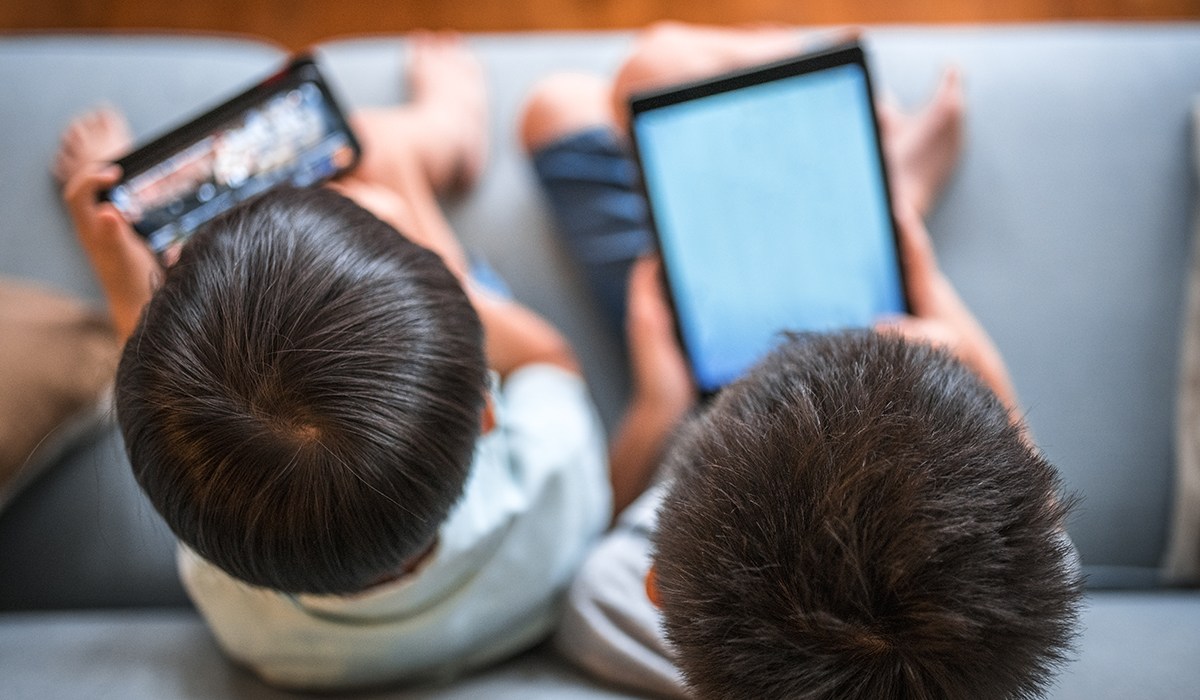
Research indicates that too much screen time could lead to multiple issues, including potential issues with behavior and attention in elementary schoolers, increased risk of depression in teens, and obesity and other physical health conditions across the board.
However, dig a little deeper and you’ll learn that many studies have also found that digital media use can help improve important skills, such as literacy, multitasking, retaining learned material, the ability to work in a team, and delegating responsibilities. With the world becoming increasingly reliant on technology, kids who don’t learn how to navigate this world may run the risk of falling behind.
Given all this conflicting info, what’s a parent to do?
It’s important to remember that, when it comes to screen time for kids, there is no one-size-fits-all approach. Technology, whether it’s a laptop, tablet, smartphone, or video game system, is simply a tool. And like any tool, the benefits and risks all stem from the way it is used.
Here are some tips to help you figure out the best strategy for your family.
Consider ages and stages. The American Academy of Pediatrics (AAP) recommends that children younger than two years of age avoid any screen media, with the exception of video-chatting with parents or other loved ones, as it may interfere with the kind of hands-on interaction they need to develop walking, talking, reading, and other important skills. For older children, particularly elementary schoolers and tweens, the AAP recommends monitoring your child’s online activities as carefully as you would monitor any out-of-home activities they engage in offline. Know what apps and games they are using—and who may be participating in those virtual activities with them.
Show, don’t tell. While it’s easy to fret about your child’s screen use, too often parents don’t consider the message their own interactions with technology may be sending. Model appropriate behaviors when it comes to technology. Remember that your kids learn best by watching you.
Designate tech-free zones. Once you introduce your child to a screen, it may seem like you can never get them away from it. That’s why the AAP says it’s so important to have media-free zones. You can make family dinner time a technology-free time for everyone—even parents—and keep televisions, video game consoles, and smartphones out of your kid’s bedroom to avoid overuse and sleep disruption.
Encourage a life outside the internet. Even adults understand how easy it can be to get lost in virtual worlds. The AAP recommends that parents leave plenty of time for “unstructured and offline play” to stimulate physical activity, creativity, and enjoyment of the outdoors.
Monitor social media usage. Socializing is an important part of tween and teen development, and while social media can be a big part of that, it’s important to make sure it’s not the only way your kids are socializing. Remind your older children that the things they may share in the moment on social media can permanently become part of their digital footprint—and to come out from behind the screen to hang out with friends whenever possible.
Develop a technology plan for your family. Studies show that parents who set (and hold) limits on the amount and content of screen time can help their kids thrive, even when those limits vary significantly from family to family. Every child and every family is different. Figure out a plan that works for you, revise it as your child matures, and trust that those limits can help find a balanced path forward.